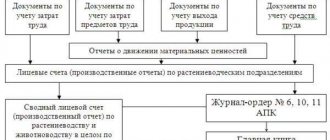Business lawyer > Accounting > Primary documents > Sample letter about payment to a third party, rules for drafting
A sample letter about payment to a third party allows you to correctly draw up the document that tax inspectors require during audits. In this case, two documents are required: a letter requesting payment and a letter confirming the transfer. Such papers help prevent filing a claim for unjust enrichment and other negative consequences for entrepreneurs.
Payment for third parties: how to make and process
Source: AKG "BUSINESS PROFILE"
Article 313 of the Civil Code of the Russian Federation provides for the possibility of fulfilling the obligation to pay for a transaction by a third party, and the creditor is obliged to accept such a transfer.
Let's look at examples of how such payment is made and how best to document it.
In order to transfer funds to a third party, the enterprise gives its debtor a written order, drawn up in any form, in which it indicates:
- an obligation for the fulfillment of which the payer transfers funds (a concluded agreement between the enterprise and the payer or an existing reconciliation report), for example, “to repay your debt to our company under agreement No.___ dated “__”____ 2021”;
- name and details of the organization in favor of which the payment will be made
- purpose of payment (details of the agreement between the enterprise and the payee, amount, including VAT, for whom the payment is made, basis)
After making a payment transfer to a third party, the payer’s debt to the company that gave the order to transfer funds will be fulfilled for the amount of this transfer.
It is important to note that an enterprise, having ordered the debtor to pay its obligations to the creditor, continues to be liable to the creditor for non-fulfillment or improper performance of the contract. For example, if the payment deadlines stipulated by this agreement are not met, or not the entire amount of the debt is paid.
In accounting, such an operation will be reflected by the corresponding entry:
Debit 60 Credit 62 – reflects the repayment of debt by the buyer for the supplier.
But the accountant will be able to make such an entry only after receiving confirmation from the payer that the payment has been made, which may be a copy of the payment order with the bank’s mark on execution.
To ensure that a payment received from a payer with whom the creditor has no contractual relationship is not returned as erroneously credited, a notification letter should be sent to this creditor with approximately the following content:
Tax accounting
There are no additional tax consequences when payment is made not by the supplier itself, but by a third party.
When calculating income tax using the accrual method, expenses are recognized in tax accounting regardless of the fact of their payment. And when using the cash method, amounts paid on behalf of the enterprise are reflected as expenses, since this terminates the counter-obligation to the supplier (clause 3 of Article 273 of the Tax Code of the Russian Federation).
Registration procedure
The process of repaying a debt for a third party is divided into successive stages:
- initially, the company acting as a debtor sends a letter to a partner or counterparty, and the text includes a request to repay the debt against its own debt or on other terms;
- the organization that received the letter decides to fulfill the obligations of another enterprise;
- After the funds are transferred, a payment letter is sent along with the payment slip.
A company that has repaid someone else’s debt is obliged to keep documentation confirming this operation for at least 5 years, since it can be requested at any time by representatives of the Federal Tax Service. These include letters sent between companies, as well as a payment slip in which a note indicating the purpose of payment is placed.
Attention! The debtor is obliged to keep papers proving that his debt was repaid by a third party, since the lack of documentation leads to negative tax consequences, since the company may demand a refund if it can prove that the money transfer was erroneous.
Example 4. An enterprise pays taxes for a third party.
Federal Law of November 30, 2021 No. 401-FZ, which amended paragraph 1 of Art. 45 of the Tax Code of the Russian Federation, allows companies and individuals to pay taxes and contributions for third parties. At the same time, you can pay not only taxes for third parties, but also fines, penalties, and debts from previous periods. But third-party payers do not have the right to demand a refund of the taxes they overpaid on behalf of the taxpayer.
A payment order for paying taxes for third parties must be filled out taking into account the requirements of the Federal Tax Service No. 3N-3-1/1850 dated March 17, 2017, which establishes that:
- in the fields where the payer’s tax identification number and checkpoint are indicated, you must indicate the details of the enterprise for which the tax is paid. If the tax is transferred for an individual, zero (“0”) is indicated in the checkpoint details;
- the “Payer” field will indicate the name of the company making this payment;
- in the “Purpose of payment” field, indicate the TIN and KPP of the enterprise that makes the payment. The name of the payer whose duty is being fulfilled is also indicated there, as well as additional information related to the transfer of funds to the budget (name of tax, fee, period, etc.), for example: “TIN of the payer//KPP of the payer//Name of the taxpayer, for which tax is paid//advance payment for the 1st quarter of 2021 for income tax";
- field 101 “Payer status” indicates the status of the person for whom the payment is made.
Letter of the Federal Tax Service No. BS-4-21/18529 dated September 15, 2017 explains that relations for paying taxes for third parties can be formalized in any of the ways established by civil law, for example, by concluding an agency agreement or a written order.
In accounting, such an operation will be reflected by the corresponding entries:
- Debit 68 Credit 51 – paid the amount of taxes and fees for a third party taxpayer;
- Debit 76 Credit 68 – the repaid debt of a third party for taxes and fees is recorded;
- Debit 60 Credit 76 – the debt was offset, the payer’s debt to the enterprise that gave the order to transfer funds to pay taxes was repaid.
An enterprise paying taxes for third parties does not have any additional tax consequences, except in cases where the enterprise pays taxes for individuals. Tax agents cannot pay personal income tax at their own expense (clause 9 of Article 226 of the Tax Code of the Russian Federation, letter of the Ministry of Finance dated September 4, 2018 N 03-04-05/63015).
The company's supplier requested that payment for the shipment of goods be transferred not to his bank account, but to his landlord. He explains this by saying that he must pay off his rent arrears, but currently has no available funds. Can a company in such a situation make payment for another legal entity? Yes, today there is nothing unusual in such a request. After all, the law allows business entities to pay their obligations not only directly. It is quite acceptable that another organization transfers funds on behalf of the debtor. Legal basis The right of the debtor to transfer the obligation to pay for it to a third party is provided for by the Civil Code. This is stated in Article 313.
Accounting
A company repaying the debt of another organization is obliged to correctly enter the necessary information into its financial statements. To select the correct wiring, it is recommended to study the example:
- company A acts as a tenant of organization B, paying a monthly fee of 80 thousand rubles;
company A sold goods to company B for 70 thousand rubles, after which it sent the buyer a letter asking to transfer funds for the products to the account of company B to pay rent;- after transferring the funds, company A additionally paid company B 10 thousand rubles;
- organization A is obliged to correctly reflect the transaction in its accounting documentation;
- the debt of company B for shipped goods is reflected by the posting: D63 K90-1;
- rent and debt to the lessor are fixed: D44 K60;
- repayment of debt at the expense of company B is reflected by the entries: D60 K62.
Attention! Information is entered into accounting only after receiving a payment order confirming the transfer of funds.
Payment for another legal entity: how to process it, sample
Close Every year the SKB Kontur company holds a competition for entrepreneurs “I am a Businessman”, hundreds of businessmen from different cities of Russia take part in it - from Kaliningrad to Vladivostok. Through the competition, we have created an inspiring collection of business stories told by people who are turning small start-ups into successful companies. Their experience and advice will be useful to anyone who is thinking about starting their own business.
To start, you need some prerequisites: an idea, some money and, most importantly, the desire to start Magazine Ask your question ← Return Similar questions Show more questions... Don't have a suitable question? — Ask your question.
Debt repayment terms
If a third party repays the debt of another company, but is not a debtor of this organization, then a new debt is created. The repayment period is indicated in the agreement drawn up between the participants, and can also be reflected in letters.
It is allowed to indicate not an exact date, but some event, for example, if money is transferred as an advance payment for future deliveries, then the debt is repaid after the goods arrive.
A letter of payment to a third party confirms the transfer of money for another organization. It is drawn up according to a special model, and is also required to protect the rights and interests of the payer. Without it, there is a high probability of encountering dishonest and illegal behavior of the second party to the transaction.
Top
Write your question in the form below
Payment for services for another organization. how to do it?
And the addressee of the letter, that is, the paying organization, should receive its original. So, the main document for making payment for another legal entity is a letter, a sample of which is presented in the following image. Reflection in the tax accounting of the payer The company has paid the obligations of its counterparty, and now this operation must be reflected in the accounting. First, let's consider whether this will have any tax consequences for the payer. If the company is on the OSN, then in some cases it can offset VAT on the transferred amount. The operation will not entail any other tax consequences.
When firms pay fees for another business
If an organization does not have available funds to fulfill its debt obligations, then it has the right to turn to another company with a request to repay the debt to the creditor. To do this, an official letter is generated containing information about the amount of debt, the creditor and the timing of repayment.
Typically, a transfer for another company is performed in the following situations:
- on the basis of a request from a debtor who, for various reasons, cannot cope with the debt on his own;
- a third party faces the possibility of losing property if the debtor does not repay the debt.
A company that decides to help a counterparty can transfer money to a partner or a direct creditor. Additionally, a letter of payment to a third party is drawn up, which serves as confirmation of the provision of assistance.
Attention! Often directors of companies make such a request to founders, who contribute funds from their personal capital.
Payment of debt to a third party in 1s accounting 8
To offset VAT, the following conditions must be met:
- the company transferred funds for its supplier as an advance payment;
- the agreement on the basis of which the company and the supplier operate contains an advance payment clause;
- the supplier has given instructions to pay its obligations (the letter mentioned above) and issued an invoice;
- there is a payment document confirming the transfer of funds to the counterparty's creditor.
For a payer who uses the simplified tax system, accounting for the transaction will depend on the nature of the payment. If he had a debt to the person for whom he paid for the goods or services supplied, then it will be considered repaid (in whole or in part). In the event that the payer took out a loan with interest from his counterparty, they can be written off as expenses within the limits of the transferred amount.
What documents are required?
The official operation is properly formalized, for which the following documents are prepared:
- a letter from a debtor who asks a counterparty, founder or other organization for financial assistance;
- a payment order, which is marked by a bank employee, and it confirms the transfer of money to the specified details;
- a letter drawn up by the payer and containing information about the date of transfer of funds for the counterparty;
- reconciliation statements that include data on the remaining obligations of each participant.
Attention! It is recommended that each documentation indicate the purpose of the payment.
About writing a letter on video:
Payment of debt by a third party in 1s 8.3 accounting
InfoOperation in the payer's accounting How to correctly reflect payment for another legal entity in accounting? The postings will depend on how exactly the payment made is counted. The most common situations are:
- payment for your supplier: Dt 60 - Kt 51;
- payment for the person from whom the loan was taken: Dt 66 (67) - Kt 51;
- payment for a “friendly” company that is not a counterparty (for example, both organizations belong to the same person): Dt 76 - Kt 51.
Tax payments You can pay for another person not only for the obligations that he or she has under an agreement with counterparties. Recently, tax and other obligatory payments can be transferred in the same way.
Previously, the tax service considered this option unacceptable - the taxpayer was obliged to pay his taxes independently. We issue a payment order, based on it you can create a bank statement with the type debit from the current account - payment to the supplier. Here the recipient of the payment is indicated, in our example, Kaktus LLC, the agreement (you can simply indicate the main agreement, since we do not have an agreement with Kaktus LLC), the cash flow item and the amount. According to the document, a posting will be generated: Dt 60.02 Kt 51, that is, the payment amount will go to the advances issued.
If we open the balance sheet for account 60, we will see our debt to Tonus LLC (on credit) and the debt of Cactus LLC to us (debit). Now we need to offset these debts. To do this, use the “Debt Adjustment” document, located on the “Purchases and Sales” tab in the “Settlements with counterparties” section. Select the type of operation “Advance offset” and click on the “Create” button.
In the header of the document we indicate that the advance payment to the supplier must be offset against the debt of our organization to a third party. In the supplier (debtor) column we indicate Kaktus LLC, since this company owes us due to the advance payment. In the third party (creditor) column we indicate Tonus LLC.
Let's go to the tabular part of the document. Here, on the “Advances to supplier (accounts receivable)” tab, click on the “Fill in” and “Fill in advances for mutual settlements” button. There will be a debt of Cactus LLC to Veda LLC, attributed to advances. On the second tab “Debt to a third party (accounts payable)” we do the same; the debt of Veda LLC to Tonus LLC will be reflected here. After the document is completed, a posting will be generated: Dt 60.01 Kt 60.02 and the debt of Cactus LLC and to Tonus LLC will be closed.
Letter about transfer of funds
Companies often turn to debtors to pay their debts. This allows for a reset. The debtor gets rid of his debt by paying off the debt of the creditor. Under such conditions, a special letter of offset is drawn up by the creditor. It includes data:
- names of organizations;
- request to repay the existing debt against receivables;
- payment amount;
- date of preparation of documentation;
- payment details;
- signature of the director of the enterprise;
- company seal.
Such a document is used only if the company has a debt, which can get rid of it by paying off the debt of the counterparty.
Payment for the counterparty by posting letter
Important
Sometimes, in the case of an existing debt to the supplier, the latter may ask to make payment not to his account, but to the account of a third organization indicated by him, in this case the debt is paid to a third party. The fact of payment is usually formalized by an additional agreement to the contract or a letter with the details of the payee. Payment of debt to a third party in 1C Accounting 8 edition 3.0.
is reflected as follows. A payment order is drawn up, which indicates the details of the third party and on the basis of which the payment is made (additional agreement or letter). The payment order does not generate a transaction and is located on the “Bank and Cash Desk” tab in the “Bank” section. For example, Veda LLC received from Tonus LLC under contract 12 goods worth 118,000 rubles. The goods have not been paid for. Tonus LLC sent a letter with a request to pay the amount owed to Cactus LLC.
Rules for filling out a payment form
To repay the debt of another company, a payment slip is drawn up, when filling it out the following nuances are taken into account:
- in the field intended to indicate the payer, information about the organization or individual who actually repays the debt is entered;
- details of the debtor enterprise are provided, provided by TIN, KPP and other data from the constituent documentation;
when filling out the field in which the purpose of the payment is indicated, the initial data of the payer is given, followed by two dashes //, after which the data of the debtor for whom the payment is being made is given;- data is entered on the purpose of the payment, its name, type and period for which the money is paid;
- if the payer is a company, then the code “01” is entered.
Attention! Possible questions and claims from the Federal Tax Service depend on the correctness of filling out the payment form.
Payment for organization by letter of posting
In our example, the enterprise “Trading House “Complex” received goods from LLC “Monolit” in the amount of 451,350 rubles; the goods were capitalized, but were not paid. The supplier asked to repay the debt to the account of the organization Sozvezdie LLC by sending a corresponding letter to the buyer.
Attention
An exception was made only in very rare cases, for example, taxes for a reorganized entity could be paid by its legal successor. However, at the end of 2021, amendments were made to the Tax Code that abolish this rule. So paying tax for another legal entity in 2021 is quite trivial.
The new rules make it possible to avoid sanctions for late payment of mandatory payments.
Possible risks
A company deciding to repay the debt of a counterparty or supplier faces some pitfalls. Difficulties may arise even for the immediate debtor. The most popular risks include:
- a debtor who has written a letter requesting repayment of his debt may renege on his words if the documentation is not drawn up correctly, so the paying company will have to face serious losses;
the counterparty who made the payment can return the funds after the debt is written off by the creditor, insisting on an erroneous transfer, but this is only possible in the absence of a response letter and payment document;- the creditor can send a complaint to the debtor about the lack of payment, although in fact the payment was made by a third party.
Companies can easily protect themselves from the above troubles if they pay attention to the proper execution of documents that are needed when performing this operation. With the help of such papers, various operations and transactions are confirmed. Therefore, even if the case comes to trial, the defendant will be able to defend his rights by stopping the plaintiff’s illegal claims.
About legality and safety
Having received an offer from his counterparty to pay his debt to a third-party organization, any novice businessman will ask himself several questions. How legal is this? Is it possible to refuse such an offer? And will the inspection authorities have any complaints about this?
In accordance with Article 313 of the Civil Code, the debtor may entrust the performance of his duties to a third party if laws, other legal acts, the essence and conditions of this obligation do not oblige the debtor to fulfill it personally. In practice, in most cases there are no restrictions on payment by a third party for the debtor. And the creditor is obliged to accept such payment. Moreover, now you can even pay taxes for a third-party organization.
Does a company have the right to refuse to pay its counterparty’s obligations to another organization? Of course, there is, unless otherwise specifically stated in the contract. No one can force a company to transfer its funds to a person with whom it does not have a contractual relationship, not even an arbitration court.
However, is it worth abandoning this option? Today, payment of obligations by a third party is not uncommon. A fairly decent practice has been developed, which suggests that if everything is properly formalized, then the tax authorities usually do not have questions about this.
Legal regulation
In Art. 313 of the Civil Code provides for the right of any company or person to pay a fee for a third party. This is legal if, according to other legislative acts, the debtor is not obliged to make the payment himself. For example, such terms are sometimes included in formal agreements drawn up between counterparties.
Attention! Practice shows that there are no obstacles to another company making payments.
If the transaction is completed correctly, the payer does not face unpleasant consequences represented by the interests of tax authorities or representatives of other government agencies. For this purpose, letters and other documents are drawn up.








